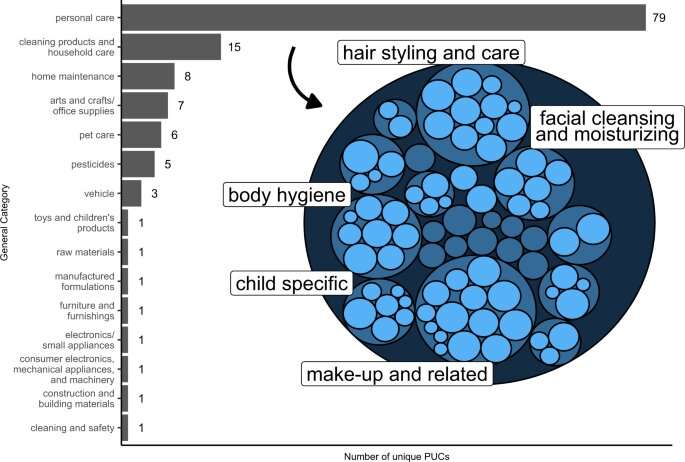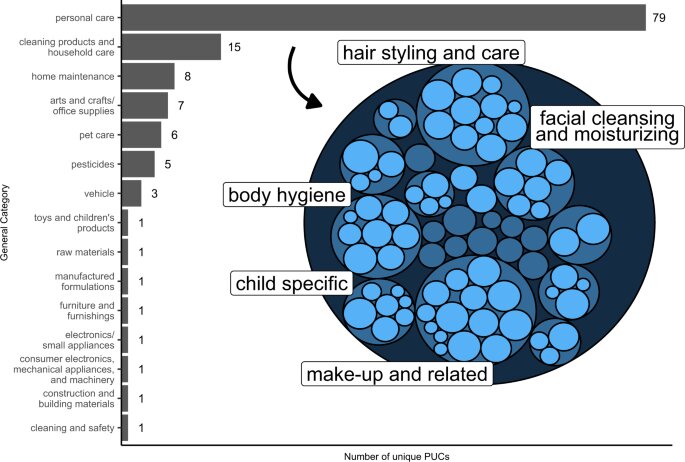Hairdressers of color exposed to ‘concerning’ mix of unknown chemicals: Study

Black and Hispanic hairdressers are exposed to a complex mixture of chemicals, many of them unknown, potentially hazardous, and undisclosed on product labels, Johns Hopkins University researchers found.
The new study is the first to apply an advanced screening technique used to identify chemicals in food and wastewater to assess chemical exposures in hairdressers. The results, just published in the Journal of Exposure Science and Environmental Epidemiology, suggest more research is needed to better understand the risks for hairdressers, particularly those of color, and how best to mitigate them.
“We know women are more highly exposed to chemicals in personal care products and we also know women of color have elevated exposures compared to women of other demographics,” said co-author and principal investigator Lesliam Quirós-Alcalá, an assistant professor of Environmental Health and Engineering who studies chemical exposures’ health effects in underrepresented populations.
“We wondered, what about women who are doing this as a profession. How much more are they being exposed. There really wasn’t anything out there when we started this.”
Researchers tested urine samples from Black and Hispanic hairdressers in the United States and compared them to samples from women of color working in office jobs. Hairdressers of color are suspected to have more chemical exposures than stylists of other demographics because of the products used and services provided in salons serving primarily populations of color.
Unlike traditional studies, the team didn’t only measure for chemicals expected to be found in people working with hair products, they looked for other compounds that had not been previously investigated.
“The conventional methods just look for chemicals we might expect to be present, but these products contain a lot of different chemicals and not all of them are known,” said senior author Carsten Prasse, an assistant professor of environmental health and engineering who studies public and environmental health impacts of chemicals in the environment.
“We wanted to open up the lens and find potential other chemicals that hairdressers might be exposed to so that we could inform future regulations of these chemicals.”
Using the same technique, the Prasse Lab found in 2022 that vaping aerosols contain thousands of unknown chemicals and substances not disclosed by manufacturers. Those findings were published in Chemical Research in Toxicology.
Compared to the women working in offices, hairstylists had higher levels of chemicals in their bodies associated with salon treatments—hair relaxers, conditioners, dyes, and fragrances—but also many more substances the researchers couldn’t identify.
“There are more chemical exposures in this occupation group than we expect,” said lead author Matthew N. Newmeyer, a postdoctoral fellow at the Johns Hopkins Bloomberg School of Public Health.
Added Quirós-Alcalá, “It’s definitely concerning. A lot of these chemicals we don’t even know what health risks they may pose.”
There are more than 700,000 hairdressers in the United States, more than 90% of whom are estimated to be female, and 30% are Black or Hispanic/Latina. In this predominantly female workforce, with many women of reproductive age, exposures may not only pose a women’s health issue, but also a children’s health issue as exposures during the preconception and prenatal period could increase children’s health risks, Quirós-Alcalá said. About half the hairdressers in this study reported working in the salon while pregnant.
The findings show more studies are critical to better understand what hairdressers are exposed to on the job, and to determine how best to mitigate these risks and to try to reduce any health disparities, Prasse said.
“It’s clearly an under researched area,” he said, “and there is a racial dimension to it which must not be forgotten.”
More information:
Matthew N. Newmeyer et al, Implementing a suspect screening method to assess occupational chemical exposures among US-based hairdressers serving an ethnically diverse clientele: a pilot study, Journal of Exposure Science & Environmental Epidemiology (2023). DOI: 10.1038/s41370-023-00519-z
Mina W. Tehrani et al, Characterizing the Chemical Landscape in Commercial E-Cigarette Liquids and Aerosols by Liquid Chromatography–High-Resolution Mass Spectrometry, Chemical Research in Toxicology (2021). DOI: 10.1021/acs.chemrestox.1c00253
Journal information:
Chemical Research in Toxicology
Source: Read Full Article
